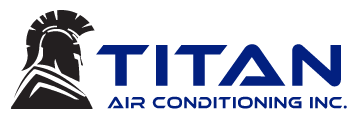How To Service Ducted Air Conditioning
Are you tired of your ducted air conditioning system not working efficiently? Do you want to know how to keep it in top shape? Look no further! By understanding the components, performing regular maintenance, and following some tips, you can ensure optimal cooling and energy efficiency in your home. First and foremost, it is essential to understand the components of your ducted air conditioning system. Each part plays a crucial role in providing cool air throughout your home, from the central unit to the ductwork and vents. By familiarizing yourself with these components, you will be better equipped to identify any issues and perform necessary maintenance.
In the following sections, we will walk you through regular maintenance and cleaning steps, ensuring that your system operates at its best. We will also provide valuable tips to maximize cooling efficiency while minimizing energy consumption. So let's dive in and learn how to service your ducted air conditioning system like a pro!
Understanding the Components of a Ducted Air Conditioning System
If you're curious about how a ducted air conditioning system works, let's dive into the components that make it all possible. The main components of a ducted air conditioning system include the air handler, ductwork, vents, and thermostat. The air handler is the system's heart, responsible for cooling and distributing the conditioned air throughout your home. It contains the evaporator coil, which cools the air, and the blower motor, which pushes the air through the ductwork.
The ductwork acts as a network of pathways that deliver the conditioned air to different rooms in your house. The vents, also known as registers, are where the air is released into each room. Lastly, the thermostat is the control center of the system, allowing you to set the desired temperature and control the operation of the air conditioning system. To better understand how these components work together, imagine this: the air handler takes in warm air from your home and passes it over the evaporator coil. Heat is absorbed as the warm air passes over the cold coil, and the air is cooled. The blower motor then pushes this cooled air through the ductwork strategically placed throughout your house.
The conditioned air is released through the vents, cooling each room to the desired temperature set on the thermostat. The thermostat constantly monitors the temperature and signals the air conditioning system to turn on or off to maintain the set temperature. By understanding these key components, you can better appreciate how a ducted air conditioning system operates and ensure its proper maintenance and servicing.
Steps for Regular Maintenance and Cleaning
To properly maintain and clean your ducted air conditioning system, following a series of steps is essential.
Regularly performing these maintenance tasks ensures that your system operates efficiently and provides clean, cool air throughout your home. Here are the steps you should take: Start by turning off the power to your air conditioning system. This'll prevent any accidents while you're performing maintenance tasks. Remove and clean the air filters. Over time, the filters can become clogged with dust and debris, reducing the system's airflow. Cleaning or replacing the filters will help maintain optimal airflow and improve indoor air quality.
Clean the outdoor unit. Use a hose to remove any dirt or debris accumulated on the unit's exterior. Additionally, trim any vegetation or plants that may be obstructing the airflow. Following these steps will help keep your ducted air conditioning system running smoothly and efficiently. Remember to consult your system's manual for any specific maintenance instructions and to schedule professional maintenance at least once a year for a comprehensive check-up and tune-up.
Tips for Optimal Cooling and Energy Efficiency
For optimal cooling and energy efficiency, follow these simple tips! First and foremost, it's important to regularly clean or replace the air filters in your ducted air conditioning system. Dirty filters can restrict airflow and make your system work harder, reducing cooling performance and increasing energy consumption. By cleaning or replacing the filters every 1-3 months, you can ensure that your system operates at its best and keeps your home comfortably cool while using less energy. Another tip to maximize cooling efficiency is to keep your home well-insulated. Proper insulation helps prevent hot air entering your home and keeps the cool air produced by your ducted air conditioning system inside. Inspect your windows and doors for any air leaks and seal them using weatherstripping or caulking. Additionally, consider adding insulation to your attic and walls to reduce heat transfer further. By minimizing heat gain and loss, you can reduce the workload on your air conditioning system and save on energy costs.
By following these simple tips, you can ensure optimal cooling and energy efficiency for your ducted air conditioning system. Regularly clean or replace the air filters, keep your home well insulated, and you'll enjoy a cool and comfortable indoor environment while also saving on energy bills. Remember, a well-maintained and efficient system benefits your comfort and the environment.

